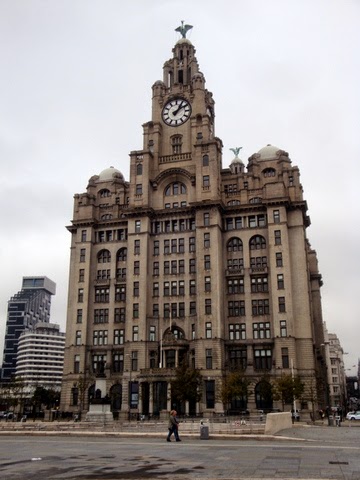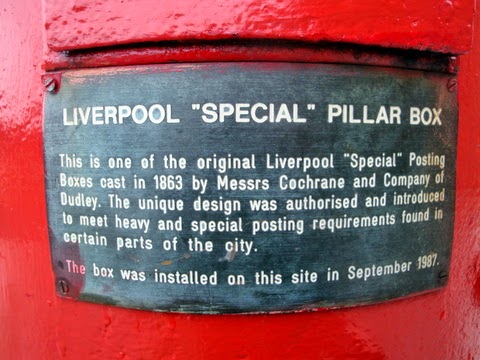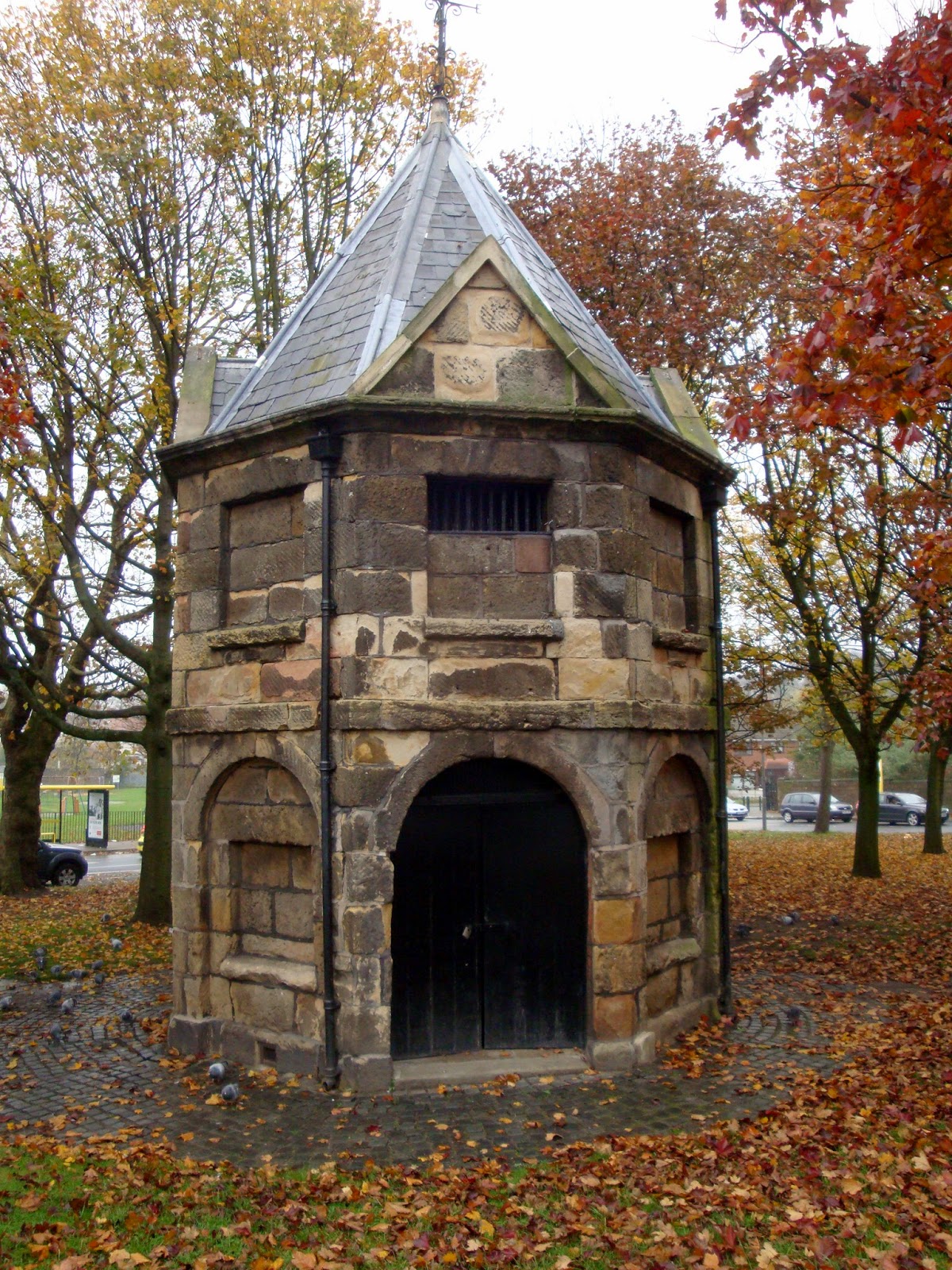LIVERPOOL. the major city, is situated on the east bank of the River Mersey.
In its hey day Liverpool was one of Britain's foremost ports with some seven miles of docks on the riverside. Since the decline of the port the riverside has been restored and given over to leisure activities becoming part of a UNESCO designated World Heritage Maritime Mercantile City.
The bird on the Liverpool
coat of arms is certainly a mythical bird and it is a bit of a mystery how it
got its name – the Liver or Lyver Bird. It is
said that the artist intended it to be an eagle or maybe a cormorant but managed to get it quite
wrong. A closer look at the bird shows
it has something in its beak – maybe seaweed – laver being any edible
seaweed.
Some say that is how the bird and the city got its name.
Some say that is how the bird and the city got its name.
The Liverbird is prominent on many buildings in the city, notably on the twin towers of the dockside Royal Liver Building, a Grade 1 listed building, which is still the home of the Royal Liver Assurance Company. When it was built in 1911 it was one of the first buildings in the world to be built using reinforced concrete and at 300 feet tall was the highest building in the UK.
Alongside is the equally impressive Grade 2 listed Cunard Building, the terminal for the White Star Liners.
The revolutionary Albert Dock, a complex of dock warehouses built in 1846 fell into disuse in 1972 and its regeneration in 1984 gave its many Grade 1 listed buildings a new lease of life as a multi-use leisure attraction of retail and food outlets and has become a major tourist attraction for the city.
The area has also been greatly enhanced by the new purpose built Museum of Liverpool. At a cost of some £72 million it was opened in 2011.
Working boats are replaced by colourful houseboats and the old pump house
is now a pub.
There has been a ferry across the Mersey between Liverpool and the Wirral Peninsular since around the 12th century. The ferry was immortalised in 1964 when Gerry and The Pacemakers, a Liverpool pop group of that era, recorded a song written by Gerry Marsden. 'Ferry Cross the Mersey' became a hit both in the UK and the USA and a charity version recorded in 1989 was number 1 in the pop charts for three weeks.
Perhaps the most famous sons of Liverpool are The Beatles who came to prominence in the 1960's to become the most successful pop group of all times.
There is a Beatles Story emporium at Albert Dock. The Cavern Club where the group first started out has been rebuilt but there are still many reminders of the fab four throughout the city.
The Neoclassical St George's Hall which dates to 1854 is one of Liverpool's finest Civic Buildings. It contains concert halls and law courts and now fully restored is a Grade 1 listed building.
A curious little stone built building on Everton Brow was formerly a lock-up for the overnight detention of minor offenders.
Known locally as Prince Rupert's Tower this Grade 11 listed building
dates to 1787.
Prince Rupert of the Rhine, a professional soldier, was the Royalist Commander during the English Civil War and used the topographical advantage of 'higher town', or Everton, to prepare to overwhelm the nearby garrison at Liverpool.
Everton F.C features the lock-up on its crest and the club actually financed its restoration in 1997.
Originally surrounded by a pound, the lock-up was also colloquially known as the Stone Jug and also as Stewbum's Palace.
A similar lock-up is still standing in Childwell Road, at Wavertree.
It dates to 1796 and is Grade 2 listed.
Originally the building had a flat roof but the fine pyramidal roof was installed in about 1869 when the building was restored following its near dereliction. The village is now swallowed up by the Merseyside conurbation but the lock-up still stands proudly in splendid isolation on a small green alongside the
busy main road.
Not only does Southport have 22 miles of coastline, it also boasts a Grade 11 listed pier some 1200 yards in length which is the second longest pier in Great Britain.
If you don't fancy the long walk their is a tramway which runs from the promenade to the end of the pier.
Between the Promenade and the sea shore there is a large recreational area and park with boating lake.
The former village of Churchtown, now a northern suburb of Southport, has a very fine Botanical Garden..
This old lock-up is situated at the entrance to the Botanic Gardens. The original lock-up and pound was demolished in 1874, but a copy of the roundhouse, as it was called, was incorporated in the new scheme around the garden entrance and then used as a tram and bus shelter.
































No comments:
Post a Comment